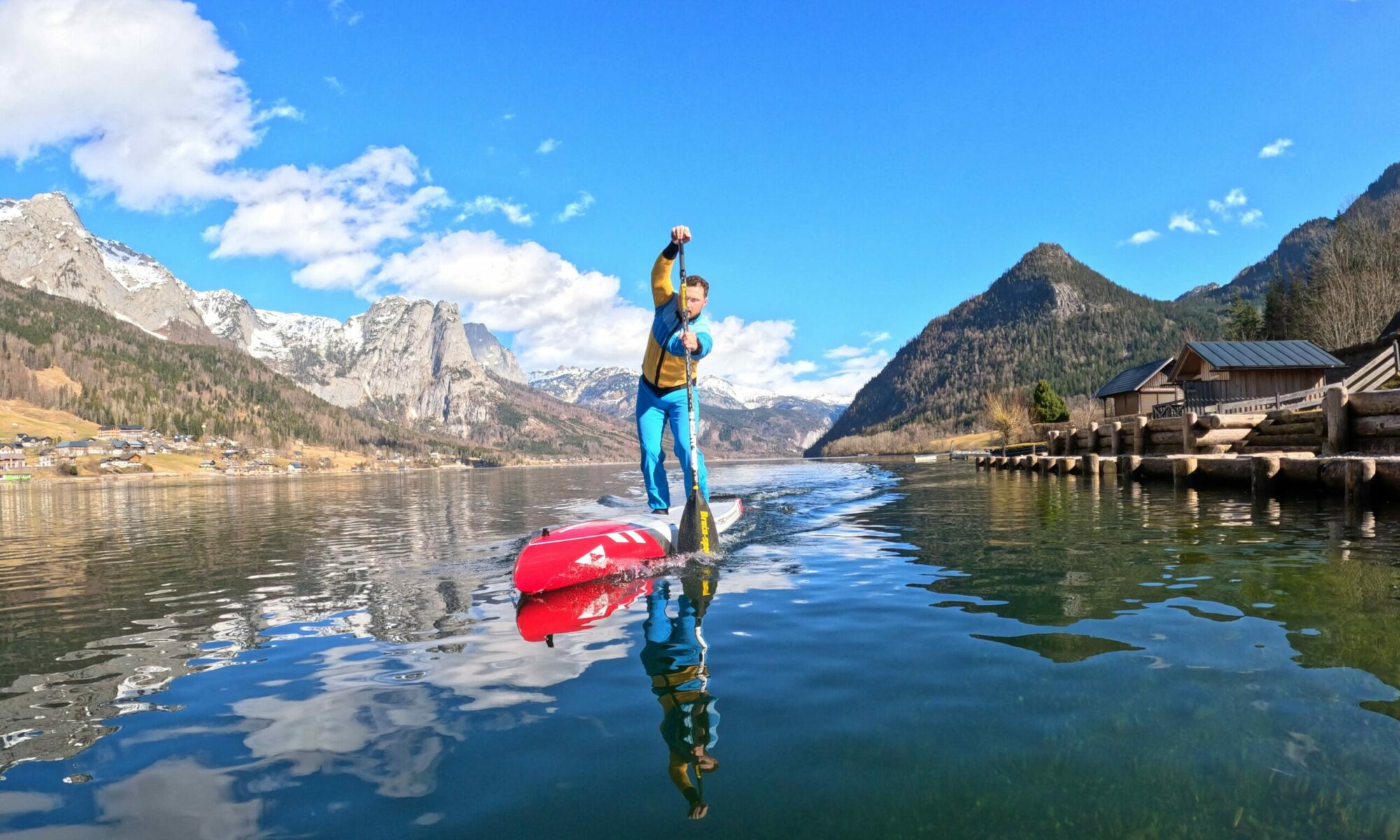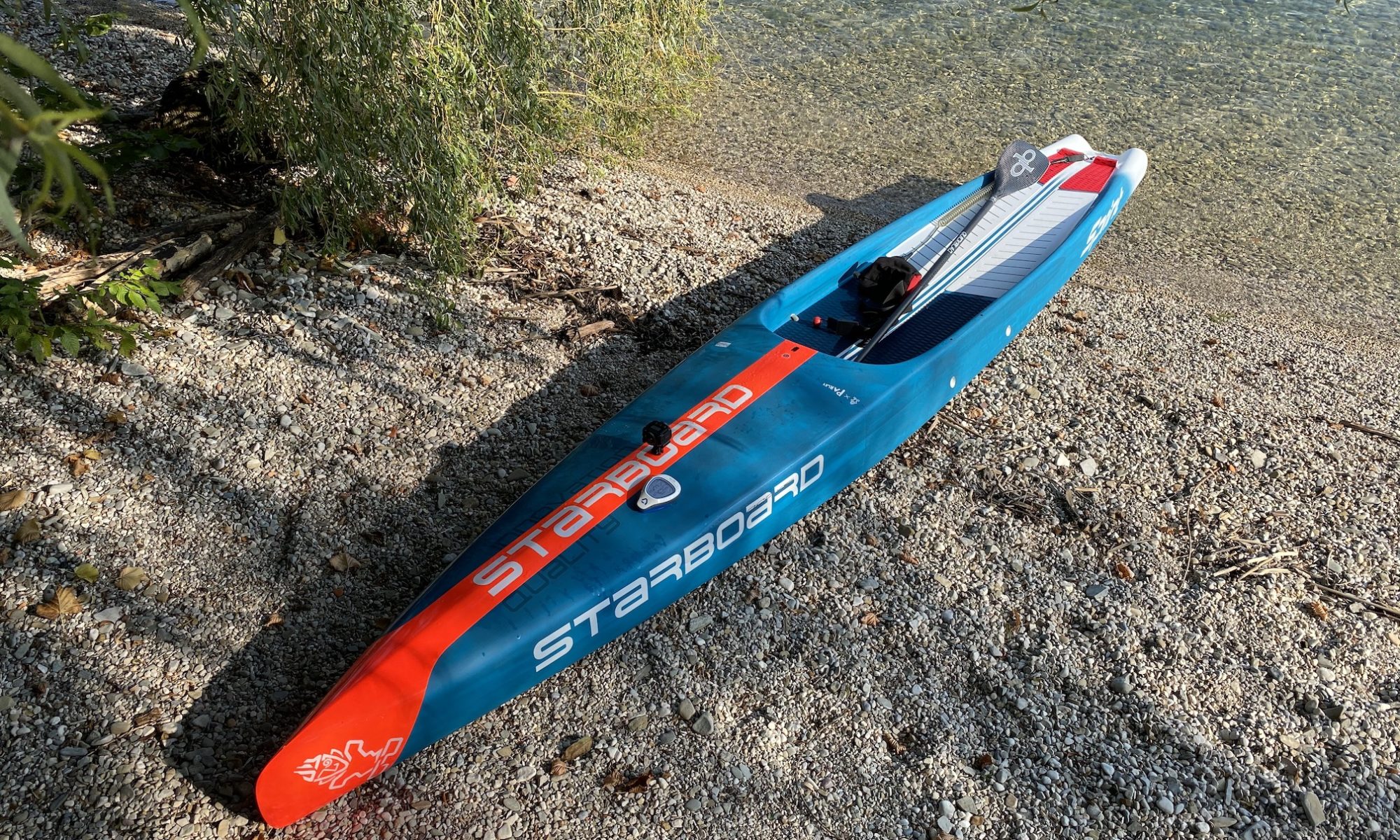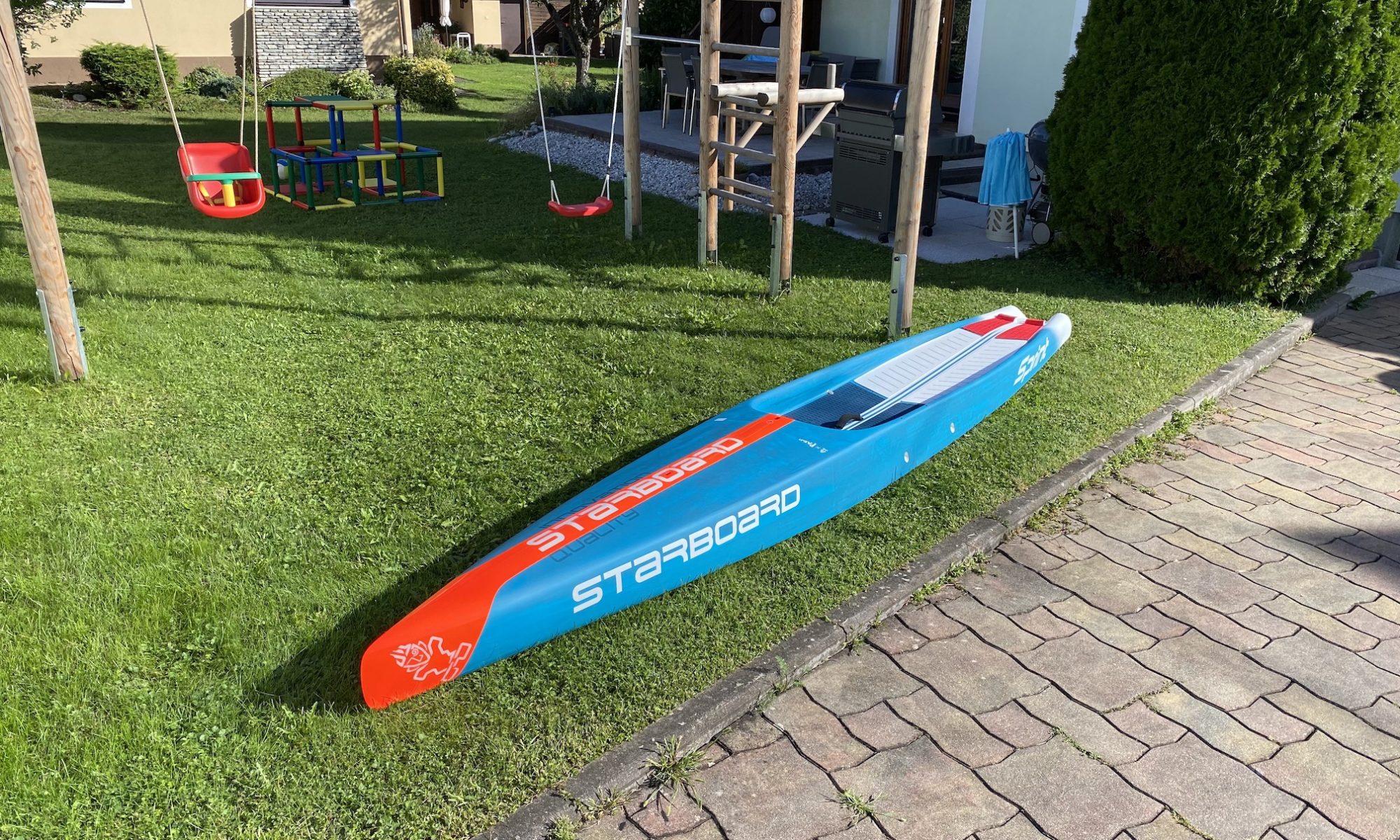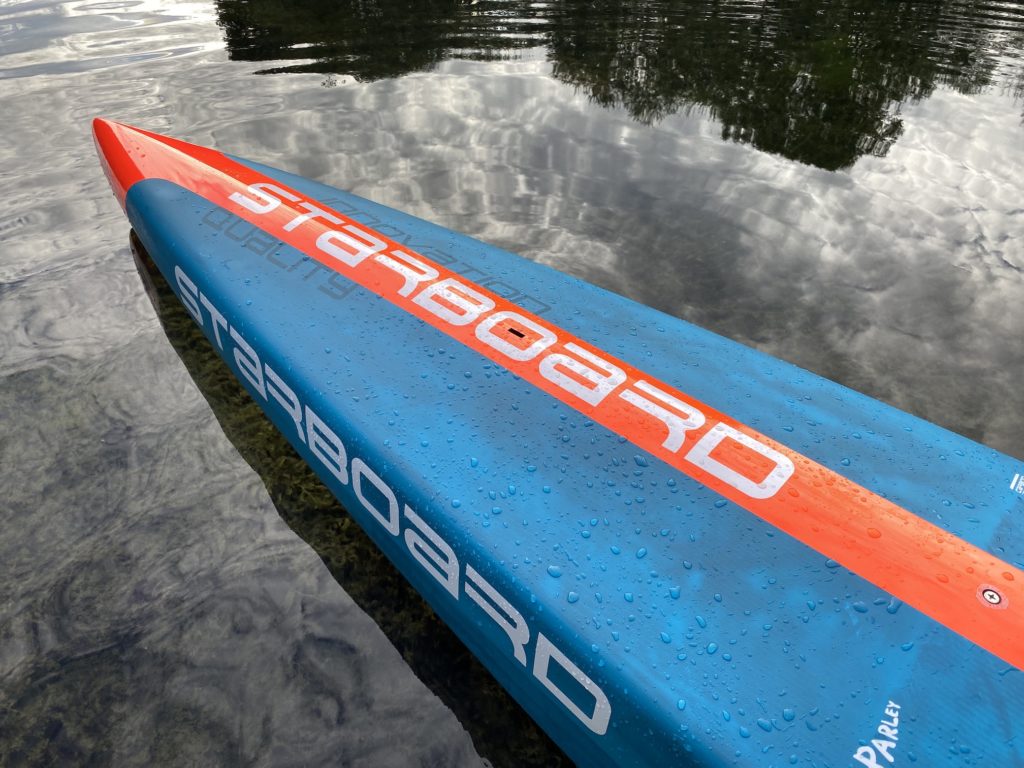Now that I’ve paddled the Fanatic Strike for almost a year and the decision was made to choose “safer” boards from race to race, I had to look for something new.
During the time trials in the first half of the year, the Strike turned out to be the fastest board. Nevertheless, I did not get warm with the Strike, especially during more leisurely training rides, because it seemed impossible to me to find a position where a efficient waterline was the result.
After a first test session at lake Neusiedlersee I was really impressed about the Starboard Sprints ability to punch upwind while providing lots of secondary stability when struggling to keep the balance. But it didn’t feel so comfortable that I would start a race right away.
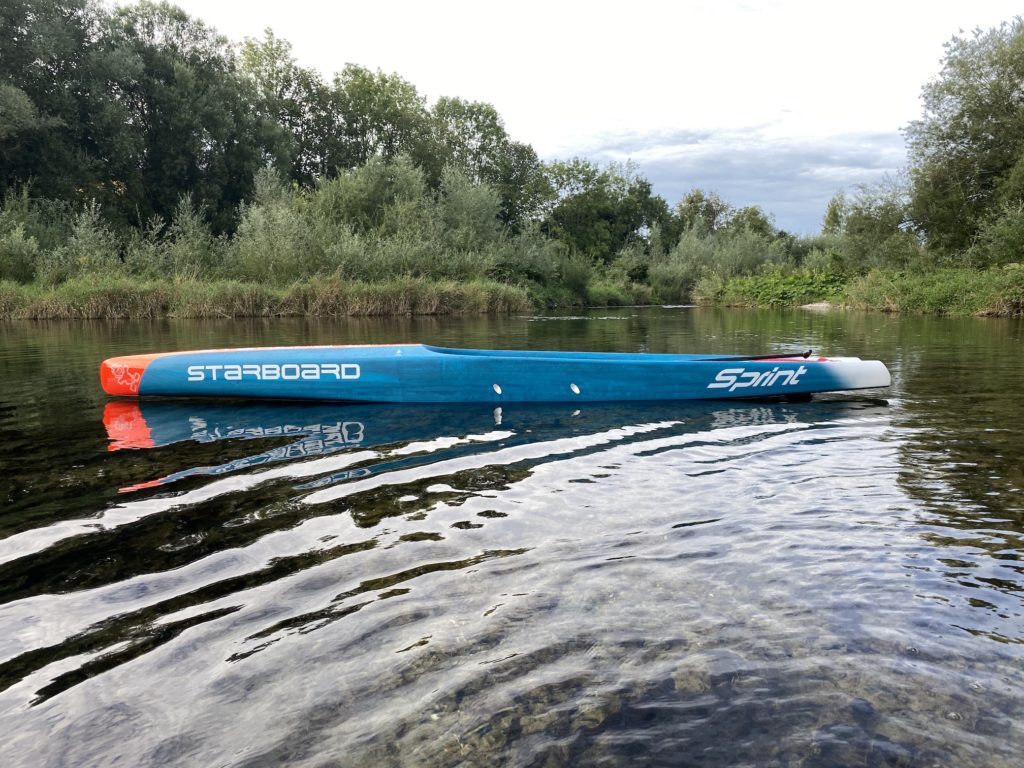
Challenge is good, feeling comfortable is better
I didn’t want to make the same mistake as with the Strike and this time I wanted a board that felt really good and comfortable for the first few meters. Since the Sprint 2021 21,5″ was a bit more nervous than the Strike, I decided to order the Sprint in a size larger.
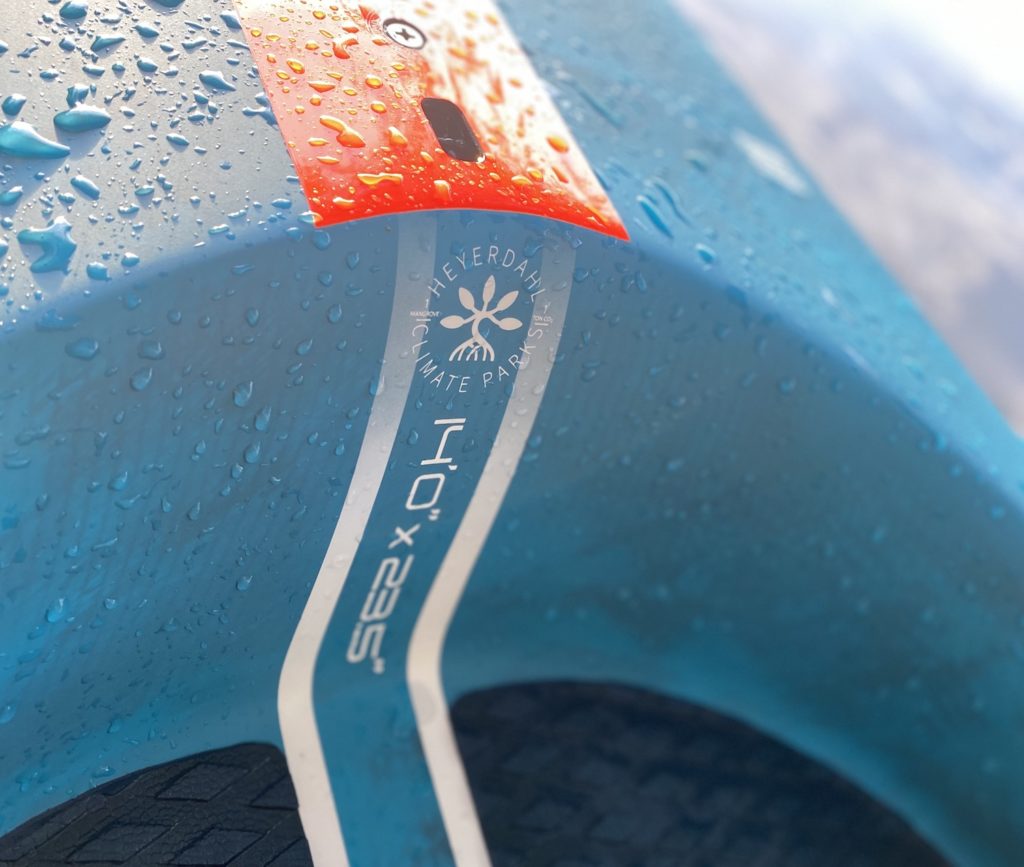
The standing area is greatly widened due to the dugout rails and provides a lot of room for proper foot placement.
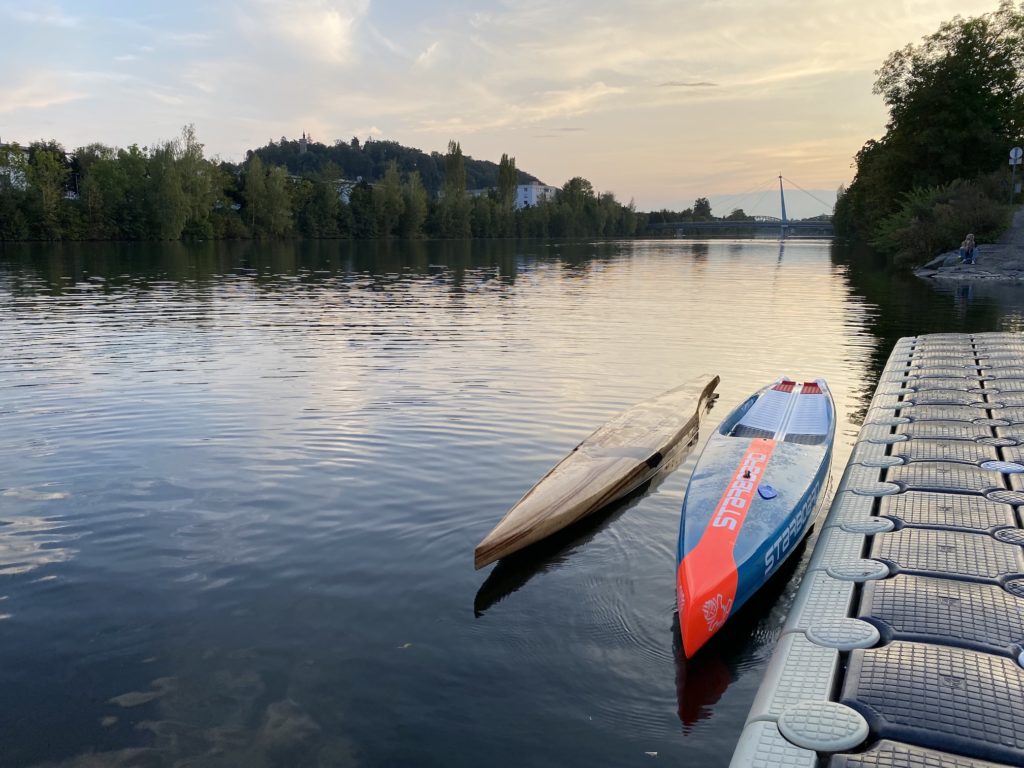
On my first trip with the sprint, I was able to significantly reduce my best time at my home spot.
If this time it goes the same as in the past, the times on the home track should also be realizable in the race:
9,1km/h in Q3/2020
So it seems like feeling comfortable, coupled with an efficent board design, looks promising.
Subtle changes,… refining what worked well in the past
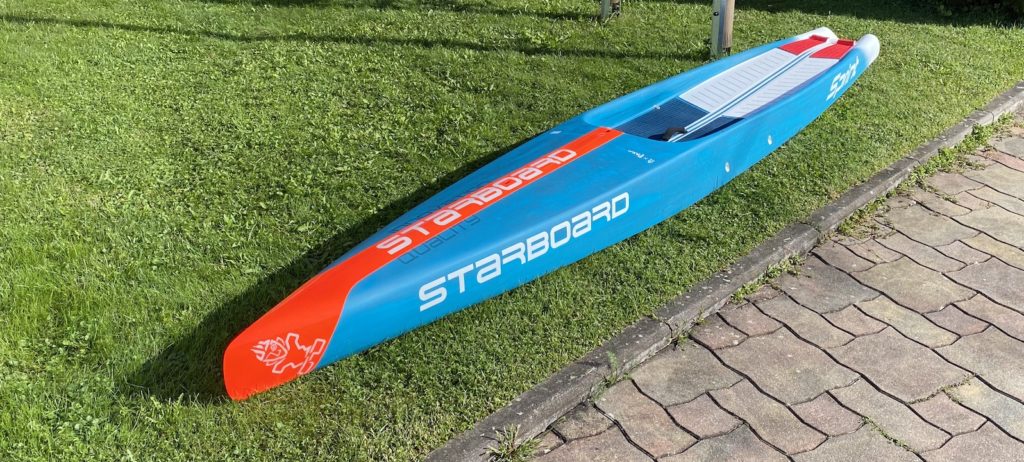
The Sprint and the Allstar 2021 not only combine the updated look, but also the updated carbon sandwich construction ensures load-optimized improvements.
Except for the fact that both models are now dugout designs, this where similarities come to an end.
It is immediately noticeable that the Sprint has very high, slightly sloping sidewalls. These ensure large safety reserves if the initial stability is overused. The new nose design sheds water quite efficiently without wrapping over the entire nose, when hitting bumps.
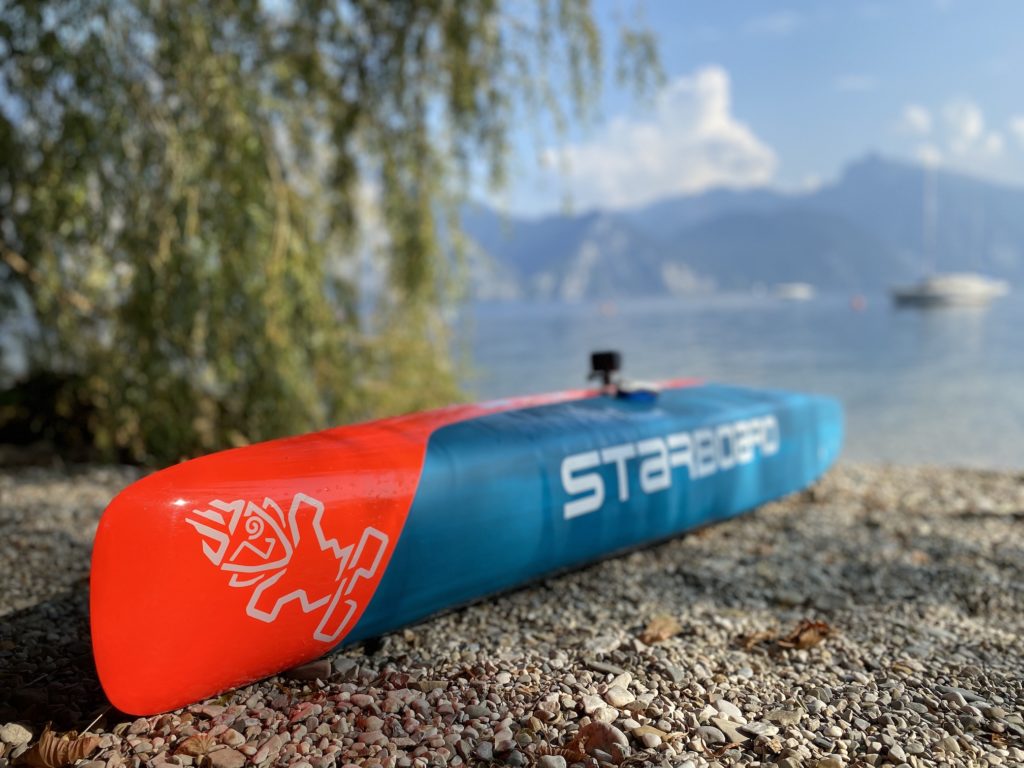
Especially in upwind conditions, I really like the very calm handling of this board… It’s not as playful as the Allstar, but it’s very effective at maintaining glide and the sharp nose makes it possible to stay on course. When facing bigger bumps the high sidewalls tend to push you back when loosing stability, although I have to say that I do have to work more when having sidewaves. The Allstar had a looser feeling and also the RS was easier to deal with sidewaves.
On my home spot, I mostly have to deal with eddies and high currents, and this doesn’t push the nose around as much as the Strike, but it’s definitely more challenging than the Allstar. Same scenario when drafting, but because of the high volume, you don’t have to change your foot position as often as with the Strike.
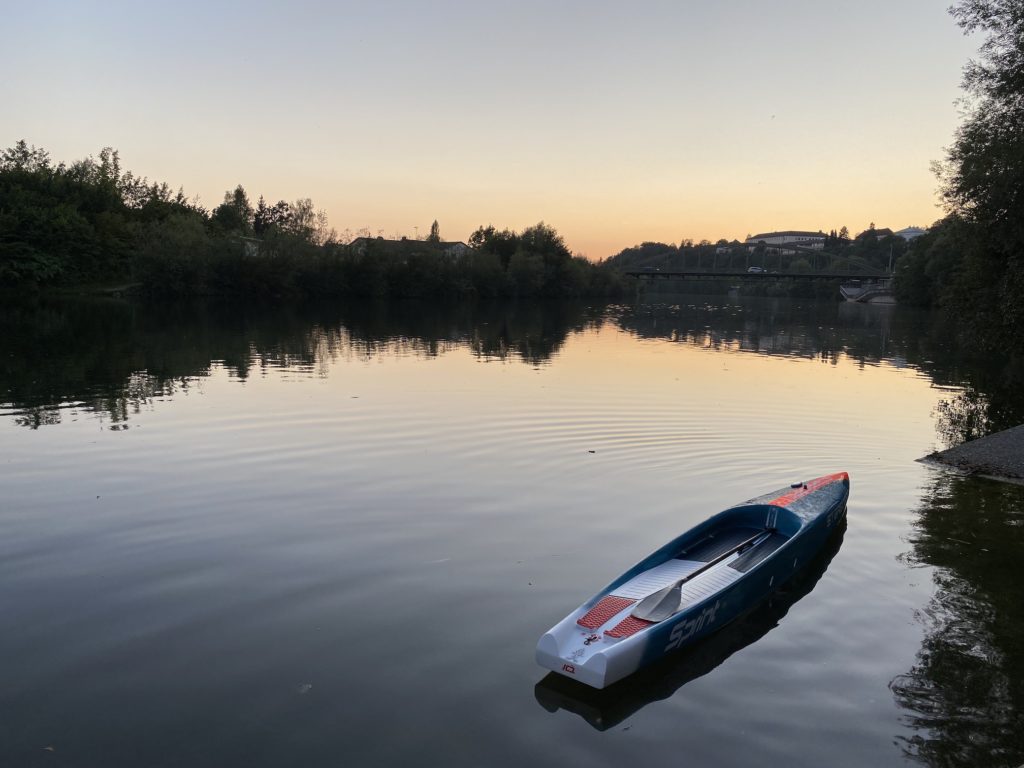
The standing tray seems to be about 2-3 cm higher than the Allstar’s (2021). This prevents water from entering that often and helps keep the ride dry.
Shallower bottom concave, wide tail…
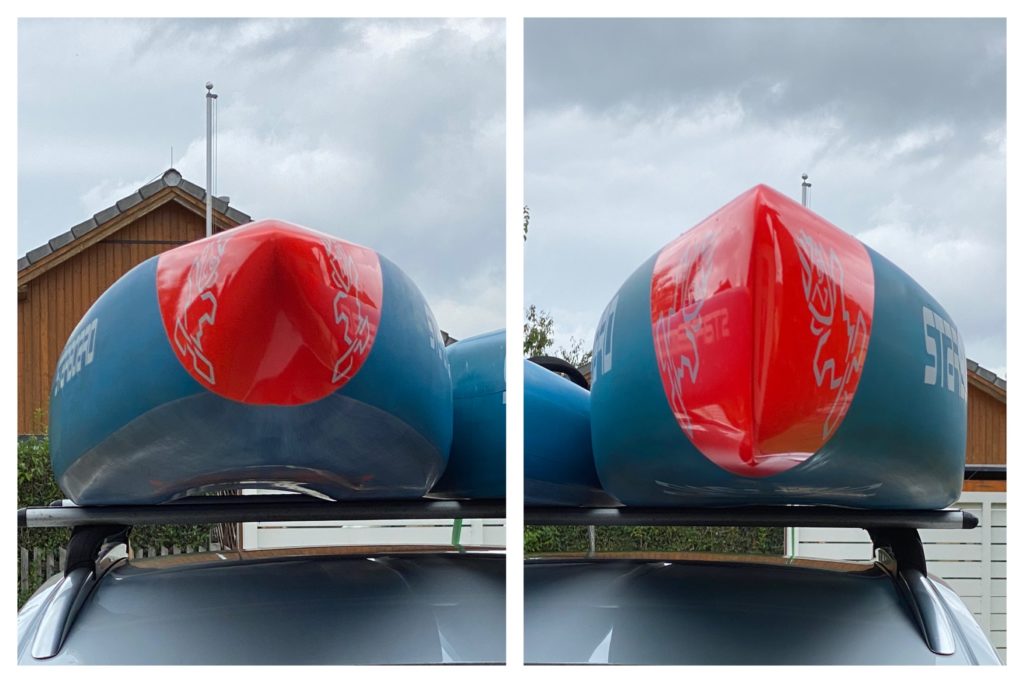
If you’ve read my previous reviews, you know that I’m basically a big fan of strong concaves in the underwater hull. Why? It serves for stability and lift.
In the 2021 Model, Starboard went for a shallower concave to reduce wetted surface area and further increase speed. I can safely say that the sprint is clearly faster than the Allstar 2019 & 2021 (24,5) in flatwater conditions.
Do you give up a lot of stability for those 10-14 seconds per kilometer?
The answer is no, but you should be aware that the secondary stability sets in very evenly and leaves a lot of room until you really have to counteract it. Overall I’d say the Sprint is relatively easy to paddle for it’s width, but both the Allstar and SIC RS might be a little bit easier to handle.


I am currently noticing that I like to take the Sprint in whatever conditions and never have the feeling of being better off on another board.
Currently I’m trying to find out what fin setup I like most, but by now I feel most comfortable with the stock Race Ultra 2.0.
The Sprint is a great board when heavier riders (85 – 100kg) are searching for a flatwater orientated board that’s not shy of hitting some bumps. It provides good speed without challenging its rider.
Soon I’ll try to give you some more impressions and I’ll do a comparison with the LightCorp Signature 2.0 24,75!
